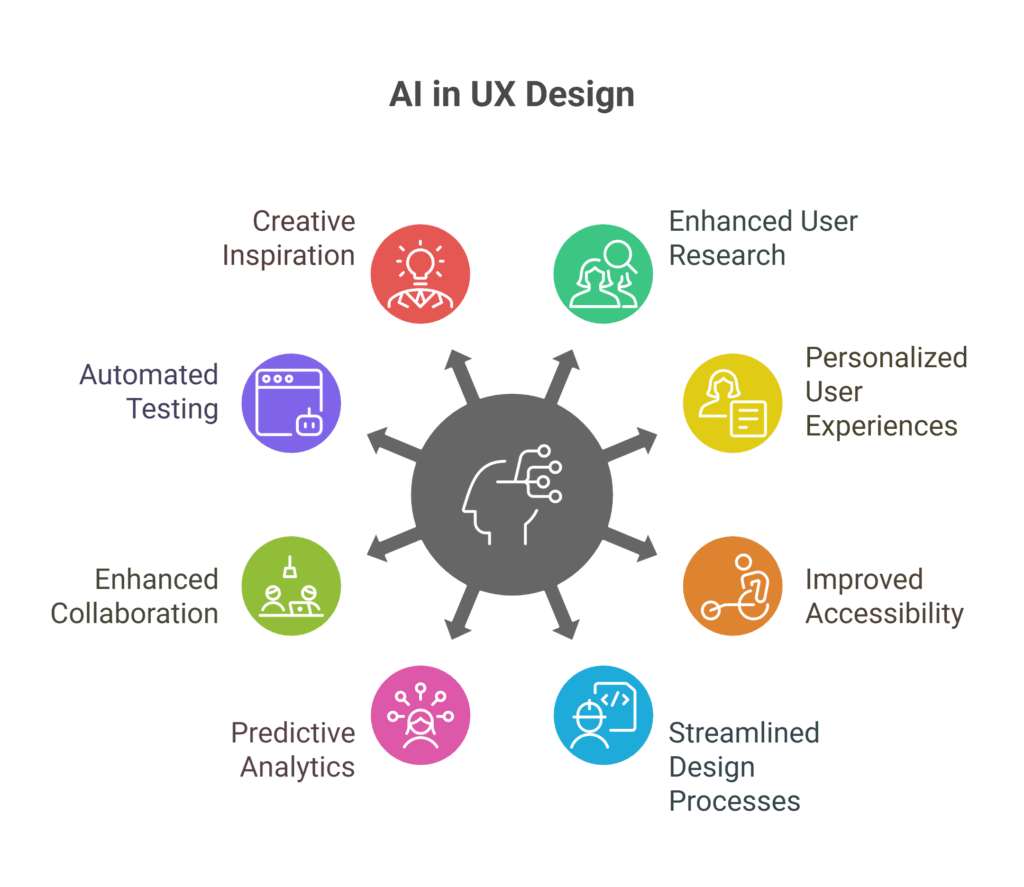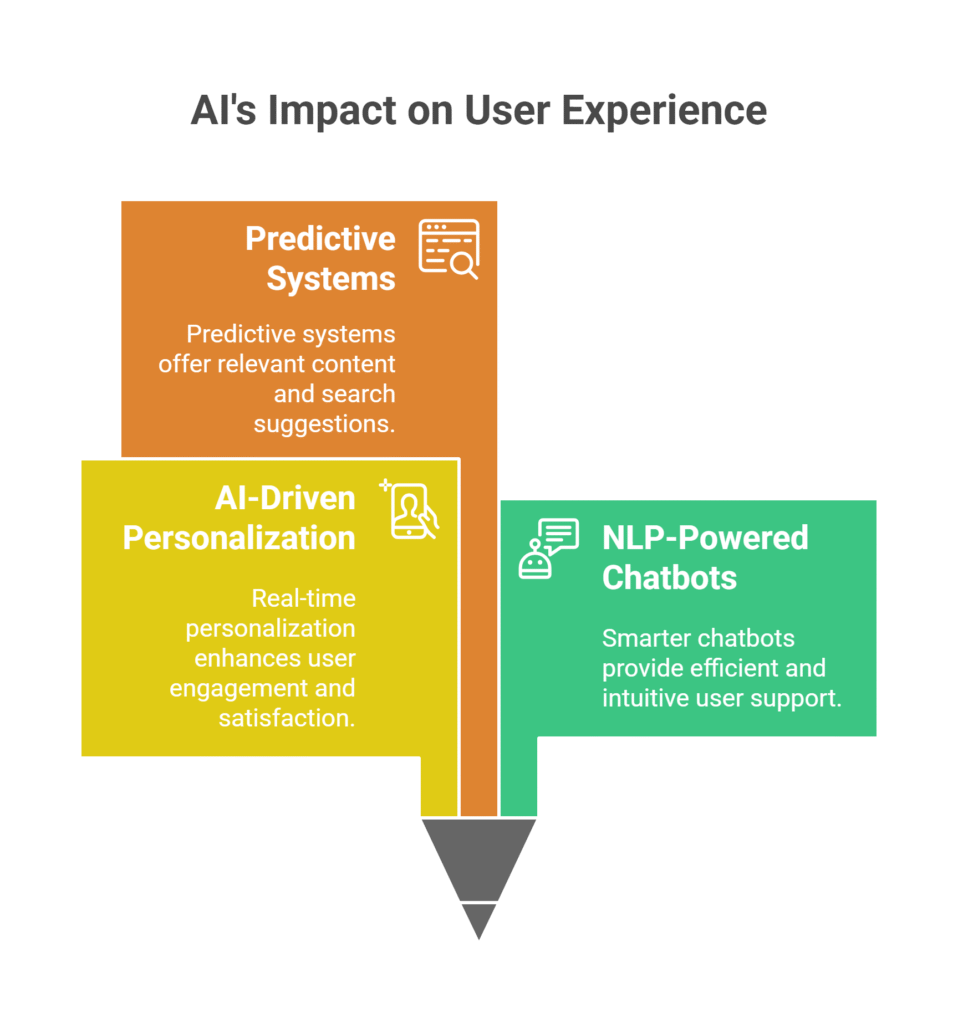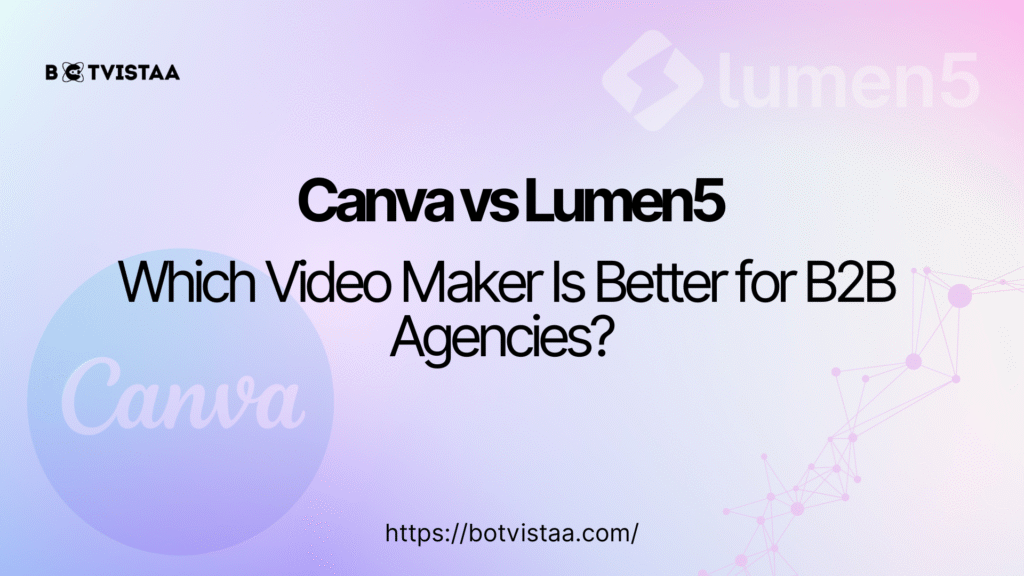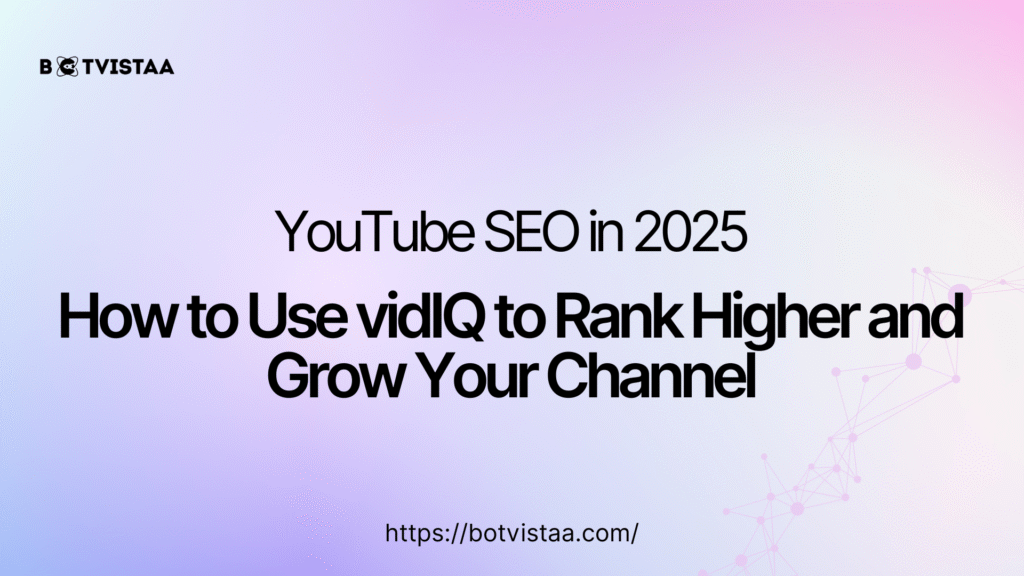Lorem ipsum dolor sit amet, consectetur adipiscing elit. Ut elit tellus, luctus nec ullamcorper mattis, pulvinar dapibus leo.
- Best AI Tools For Automation
How AI Enhances UX Design on the Website
Jump To
When you purchase through links on our site, we may earn an affiliate commission. Here’s how it works.
Today, websites are not just online brochures. They are experiences. Imagine visiting a website that instantly understands what you want, shows you exactly what you’re looking for, and even talks to you like a human. That’s not magic—it’s AI enhanced UX design in action.
And in a world where every second matters, AI enhances UX design on the website by making it faster, smarter, and more personal.
UX, or User Experience, is all about how a person feels when interacting with a digital product. It’s the difference between a frustrating, slow-loading mess and a smooth, intuitive journey. And with AI, that journey gets smarter every time you click.
Let’s dive into how AI is upgrading the way businesses build better user experiences, especially on client websites.
What Role Does AI Play in Modern UX?
AI goes beyond handling repetitive tasks; it brings smart functionality to the table. With Natural Language Processing (NLP), AI can understand how users speak and interact. With machine learning, it can study patterns and improve experiences over time. It’s like giving your website a brain.
AI tools can:
- Analyze massive amounts of user data in seconds
- Predict what users might do next
- Personalize content and interfaces on the fly
- Automate repetitive UX tasks like surveys or layout testing
For web designers and UX experts, this means faster development, fewer assumptions, and more user-centered outcomes.
Do you want to check the tools for AI website builder?
8 Ways AI Helps UX Designers Create Better Websites
Let’s look at how AI assists designers in building smoother, smarter, and more helpful digital experiences:

Smart Design Suggestions
AI tools like Adobe Sensei and Figma AI analyze user data and suggest the best colors, layouts, and fonts for your audience. This helps designers save time and make better choices.
Example: If most users like dark mode at night, the AI can recommend switching to a darker theme in the evening.
Automating Repetitive Design Work
Instead of manually creating every element, AI can generate buttons, icons, or even full layouts. Designers spend less time on basic tasks and more on creativity.
Natural Language Processing (NLP) for Smart Features
NLP allows computers to understand human language. It’s used in:
- Chatbots that understand user questions
- Search bars that recognize natural queries
- Voice assistants
Example: A user types “I need help logging in” — NLP helps the chatbot understand and reply like a human.
Language Service Providers (LSP) for Multilingual UX
LSPs, combined with AI, translate your website content into different languages. This creates a better experience for users around the world.
Example: Shopify uses LSPs and AI to let sellers auto-translate their online stores for global shoppers.
Fast A/B Testing and Feedback
Instead of testing one change at a time, AI can run many variations of your design and pick the one that performs best. This helps improve conversion and usability faster.
Predicting What Users Will Do
AI tools analyze user behavior and predict what they might do next. This helps with:
- Personalized product recommendations
- Smarter navigation
- Better call-to-action placement
Example: Amazon shows you products based on what other people with similar behavior viewed or bought.
Designing for Accessibility
It also plays a key role in improving accessibility for users with disabilities.
- Reading text aloud
- Adjusting font sizes
- Describing images for screen readers
Example: Microsoft’s Seeing AI app uses NLP and computer vision to describe what’s around for visually impaired users.
Auto-Generating Icons, Mood Boards & Copy
AI tools like DALL·E or Midjourney create images from text prompts.
Others like ChatGPT help write UX copy like button labels, error messages, or onboarding steps.
PRO TIP
AI is like a smart assistant for UX designers. It helps them work faster, make better design decisions, and understand users more clearly.
Designers can test ideas quickly, improve accessibility, and even generate content and visuals — all with the help of AI. This means less guesswork and more time to focus on creating great user experiences.
3 Ways AI Directly Improves the User’s Experience
It’s not just about making life easier for designers. Here’s how AI improves UX for the users too:

AI-Driven Personalization in Real Time
Ever wonder how Netflix seems to know exactly what show you want to watch? Or how Amazon recommends that gadget you didn’t even know you needed? That’s AI-driven personalization.
For client websites, this means tailoring the content, layout, and navigation based on who the user is. AI can detect:
- Location
- Time of day
- Browsing history
- Purchase behavior
- Device type
Then, it adjusts the experience. For example, an online store might show warm clothing to Canadian visitors in winter while offering beachwear to someone browsing from Australia.
It’s like having a personal shopping assistant on every page.
NLP-Powered Chatbots for Smarter Conversations
With Natural Language Processing (NLP), AI can interpret and respond to human language more effectively. This is what makes chatbots sound more human and less like boring robots.
Good chatbots can:
- Answer questions 24/7
- Help users navigate websites
- Collect feedback or book appointments
- Learn from past interactions to improve responses
For small businesses, NLP chatbots can boost engagement and reduce support costs.
And for users, it feels like someone’s always there to help—without the hold music.
Predictive Search and Content Recommendation Systems
When you start typing in a search bar and it guesses your query? That’s predictive search. When a blog recommends articles based on what you just read? That’s a content recommendation system. Both are AI at work.
These tools use behavior patterns and semantic search to figure out what you want—even before you do. This leads to better user engagement, lower bounce rates, and faster access to the information users need.
Real-World Examples: Brands Using AI to Improve UX
Spotify's Personalized Playlists
Spotify’s UX is legendary, thanks to AI. It uses predictive modeling and user behavior tracking to build playlists like “Discover Weekly” and “Daily Mix.”
This personalized content keeps users engaged, helps them find new music, and makes the app feel custom-made.
Amazon's Smart Recommendations
Amazon’s product recommendation engine is powered by AI. It tracks:
- What you search
- What you buy
- What you add to your cart
Then it shows you products you’re most likely to buy next. This keeps users browsing longer—and buying more.
It’s not just about sales—it’s about a smoother shopping experience that feels relevant at every step.
Airbnb’s AI-driven UX Refinements
Airbnb uses AI to optimize search results, personalize listings, and even offer smart pricing suggestions to hosts. The platform’s smooth UX, even across devices, is a direct result of AI-driven design choices.
From personalized listings to smart search filters, Airbnb proves that AI and UX go hand-in-hand.
Best Practices for Using AI in UX
Start Small, Scale Fast
Jumping headfirst into AI can feel overwhelming. But the key to integrating AI into UX is starting with small, manageable tasks. Choose one area—maybe personalized product recommendations or a simple NLP chatbot—and test it.
Once that’s running smoothly, expand. Add sentiment analysis to customer reviews or automate parts of your design system.
This “crawl, walk, run” approach lets you learn what works and avoid costly mistakes. It also helps your team grow more confident using AI tools without needing to be data scientists.
Plus, starting small means less risk. You can experiment, refine, and grow—all without overspending or risking your site’s stability.
User-Centered AI Design
At its core, UX is about the user. So when using AI, keep humans in the loop.
Every AI feature should:
- Solve a user problem
- Be easy to understand
- Respect user preferences
For example, AI might want to auto-suggest content—but if the suggestions are irrelevant, users get frustrated. Regularly test your AI features with real users. Ask questions like:
- “Is this useful?”
- “Is this confusing?”
- “Do you trust it?”
Let users override or customize AI behaviors. This gives them control and builds trust.
Iterative Design with AI Feedback
Traditional UX relies on user feedback loops. But AI adds a twist—it gives feedback in real time.
With behavioral analytics and machine learning, you can spot trends the moment they happen. For example, if users stop interacting with a new feature, AI tools flag it fast.
Use this data to refine your design continuously. No need to rely on monthly reports—AI enables you to fine-tune your user experience daily.
And always be testing. AI lets you A/B test new features, copy, and layouts faster than ever. Use this power to make informed decisions, not just creative guesses.
Final Verdict for Agencies
AI is no longer a futuristic concept—it’s a daily tool transforming the way we build digital experiences. From personalization and predictive design to accessibility and automation, AI offers an endless well of opportunity for improving how users interact with websites.
But tools alone don’t create great UX. It’s the thoughtful, human-centered application of these tools that truly makes the difference.
So whether you’re a freelance designer, a startup founder, or part of a UX team, now is the time to embrace AI. Start small, iterate, and stay curious. Your users—and your website—will thank you.
Ready to make your website smarter with AI enhanced UX design? Check our recommended tools.
FAQ'S
Can AI fully replace UX designers?
Nope! AI is a powerful assistant, but creativity, empathy, and problem-solving still need a human touch. AI helps with data and suggestions, but the final UX vision comes from people.
What are the top AI tools for UX design?
Some popular tools include Uizard, Copy.ai, Figma AI, Jasper, and Google Optimize. Each tool helps with specific tasks like layout, copywriting, or testing.
How do I start using AI in UX design?
Start with one simple feature—like a chatbot or smart recommendation engine. Use platforms with built-in AI features or explore plugins for design tools you already use.
Is AI in UX safe for user data?
It can be, but only if used responsibly. Make sure to comply with data privacy regulations (such as GDPR), stay transparent, and give users the choice to opt in.
Will AI make websites more accessible?
Absolutely. AI can improve voice navigation, screen readers, real-time layout adjustments, and more. It’s making the web more inclusive than ever before.
Subscribe To Our Newsletter
Aqsa Tehreem
Web Story
- Best AI Tools For Automation
Our Recent
Blogs


Canva vs Lumen5: Which Video Maker Is Better for B2B Agencies?

YouTube SEO in 2025: How to Use vidIQ to Rank Higher and Grow Your Channel

GoHighLevel Funnel Automation for Client Retention: Post-Onboarding Guide



